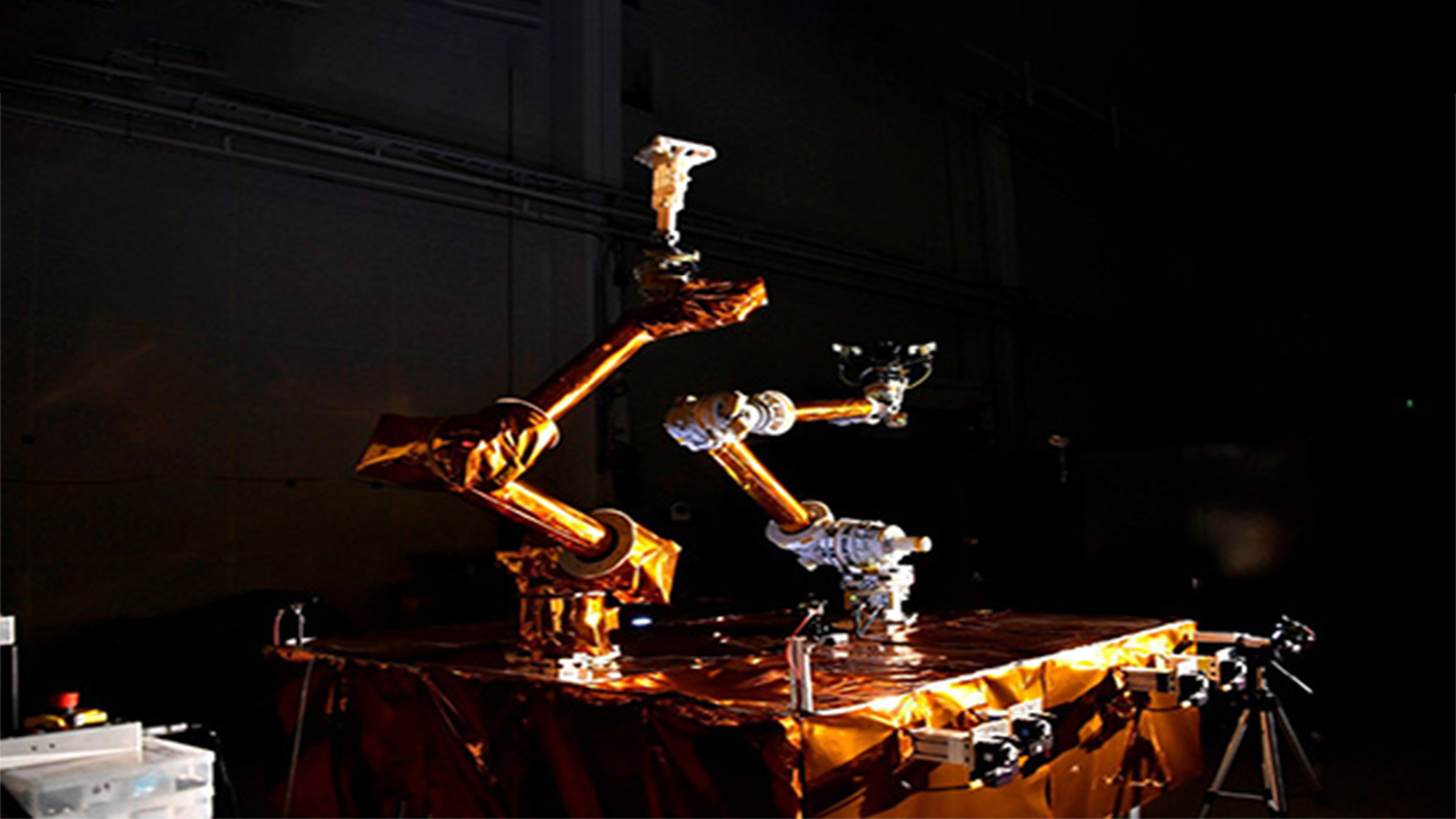
NRL’s Naval Center for Space Technology is providing the robotic arms for DARPA’s Robotic Servicing of Geosynchronous Satellites experiment. (DARPA)
WASHINGTON — With Navy interests in space capabilities on the rise, the service has been increasing spending on both research and developing space expertise among its sailors, according to the Naval Research Laboratory’s top space official.
“I would say the Navy has really invested a lot more in recent year in space,” Steven Meier, director of NRL’s Naval Center for Space Technology (NCST), told a webinar sponsored by the National Security Space Association.
For example, he said, the Navy has long had a “space cadre” and recently stood up a maritime space officers program.
The latter effort, launched last August, is to recruit officers into a designated “Maritime Space Officer” billet, (187x) “to form a community of maritime space integration and planning professionals,” explains a Navy press release.
The Navy, including NCST, also is now in the throes of detailing its specific space-related needs to underpin maritime operations — in part in order to transmit those requirements to the Space Force.
“We’re trying to right now in the Navy to put together some requirements documents … to say, ‘Hey, the Navy does have unique maritime mission needs,” Meier added, with the idea of “flowing them” to the Space Force “that’s in charge of all DoD space.”
But meanwhile, NCST is continuing to focus on research to help the Navy meet its own needs. Noting that “a lot of people don’t map out Navy and space together,” he elaborated that those needs and interests fall into five baskets:
- weather and environmental monitoring;
- intelligence, surveillance and reconnaissance (ISR);
- positioning, navigation and timing — including alternatives to the Global Positioning System satellite network that he called “fragile;”
- satellite communications; and
- missile warning, overhead persistent infrared and support to ballistic missile defense.
Meier stressed that the NRL has been involved in researching and developing space systems since the dawn of the space age, and that NCST has a number of cutting-edge programs underway that range from building satellites and components to providing operational ground stations.
For example, NCST is providing the robotic arms to DARPA’s Robotic Servicing of Geosynchronous Satellites (RSGS) program designed to create operational capability for “dexterous” robotic repair in space to increase the resiliency of the US satellite architecture. After some tumult in the program that caused delays, the RSGS demonstration — being executed in partnership with Northrop Grumman’s SpaceLogistics — is expected to liftoff in 2023, according to DARPA’s website.
In another cooperative program, NCST is supporting the Space Development Agency (SDA) in developing and managing the ground system for its initial set of data relay and missile tracking satellites, known as Tranche 0.
“We’re doing their entire mission management for the Tranche 0, which is 28 satellites,” Meier said. “So, we’re doing the mission management, the systems engineering, the trade studies, everything that needs to get done to do the entire ground segment.”
The center also runs its own Blossom Point ground station in southern Maryland, which Meier said was the first satellite ground station to operate on US soil. It is unique, he added, because it is “truly 24/7, lights out, autonomous.”
Another ground station, hilariously called Pomonkey but much more seriously supporting classified space tracking missions form Low Earth Orbit out to deep space, boasts the “fastest 30m full motion antenna” in the United States, Meier said. “It can turn 360 degrees to a complete circle in a little less than two minutes,” he stressed. And according to his slides, the antenna also features “customizable RF systems frequency coverage of 0.1 – 22 GHz.”
Meier said that one of the strengths of NCST is that the center works on space systems from “end to end.”
“So, we have people doing things all the way from orbitology, to design, build, assemble, integrate, test, and then ultimately operate,” he said, with more than a hint of pride.
Major trends and takeaways from the Defense Department’s Unfunded Priority Lists
Mark Cancian and Chris Park of CSIS break down what is in this year’s unfunded priority lists and what they say about the state of the US military.


























